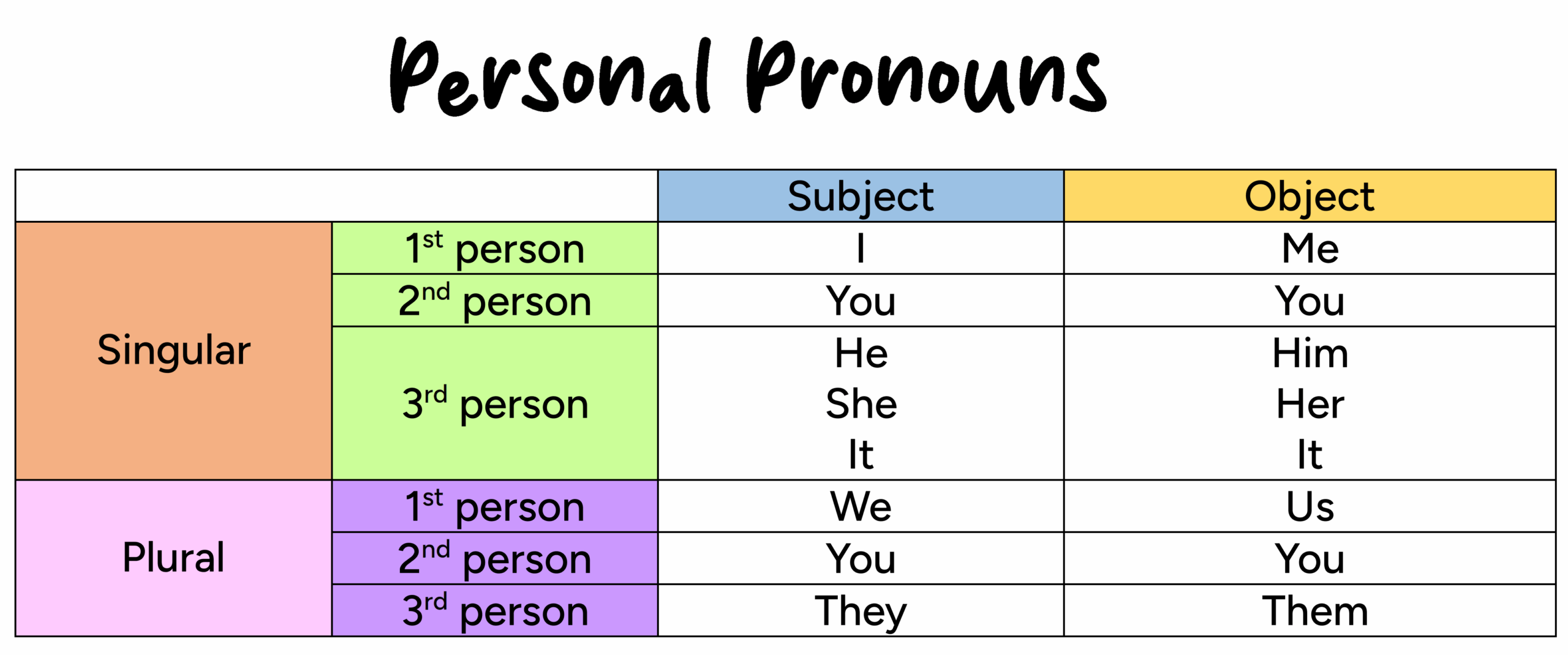Personal pronouns are an essential part of the English language, as they are used to refer to people or things without explicitly naming them. They help make sentences more concise and less repetitive. Understanding the various types of personal pronouns can help improve your communication skills and writing abilities.
There are different categories of personal pronouns, including subject pronouns, object pronouns, possessive pronouns, and reflexive pronouns. Each type serves a specific function in a sentence, and it’s important to use them correctly to convey your intended meaning.
Full List of Personal Pronouns
1. First Person Singular: I, me, my, mine, myself
2. First Person Plural: we, us, our, ours, ourselves
3. Second Person Singular: you, your, yours, yourself
4. Second Person Plural: you, your, yours, yourselves
5. Third Person Singular: he, him, his, himself / she, her, hers, herself / it, its, itself
6. Third Person Plural: they, them, their, theirs, themselves
Personal pronouns play a crucial role in sentence structure and can affect the tone and clarity of your writing. Subject pronouns are used as the subject of a sentence, while object pronouns function as the object of a verb or preposition. Possessive pronouns indicate ownership or possession, and reflexive pronouns are used to reflect back on the subject of the sentence.
It’s important to pay attention to the context in which personal pronouns are used, as they can vary based on the formality of the situation and the relationship between the speaker and the listener. Using the correct pronouns can help avoid confusion and ensure effective communication.
Overall, personal pronouns are a fundamental part of the English language and are essential for clear and concise communication. By familiarizing yourself with the full list of personal pronouns and understanding their various functions, you can enhance your writing skills and effectively convey your thoughts and ideas.
Next time you’re writing or speaking, pay attention to the personal pronouns you use and consider how they impact the message you’re trying to convey. With practice and attention to detail, you can become more proficient in using personal pronouns effectively.
